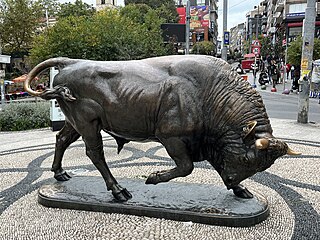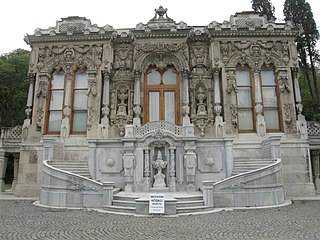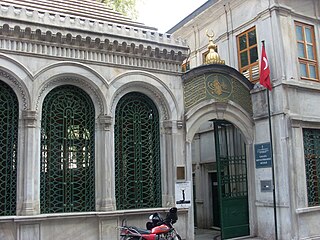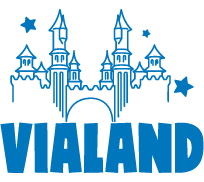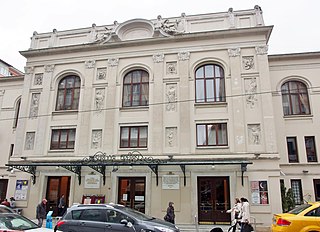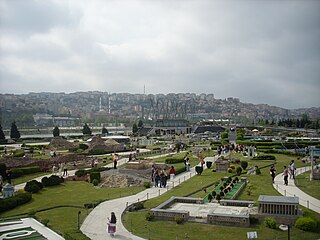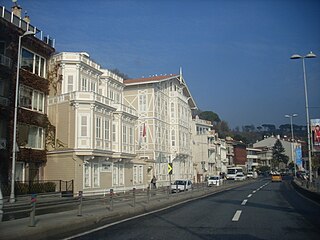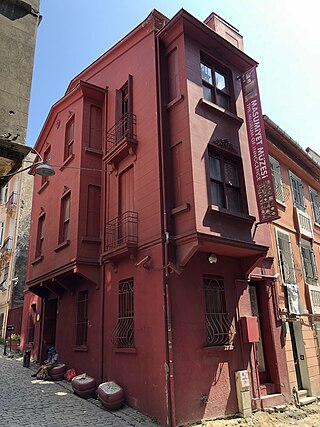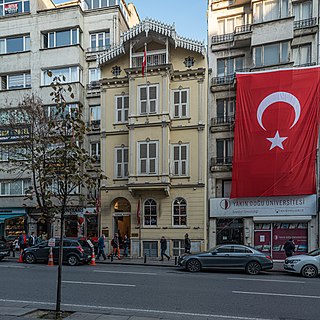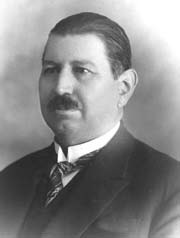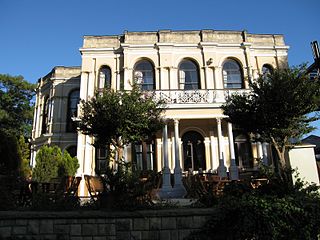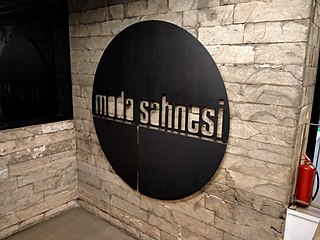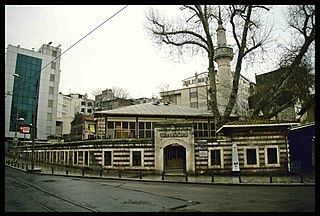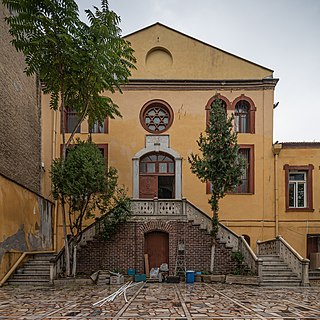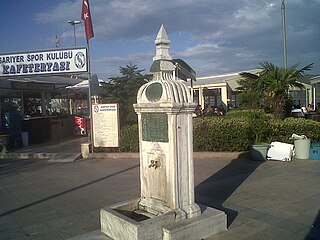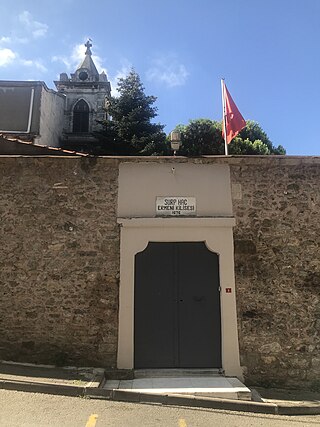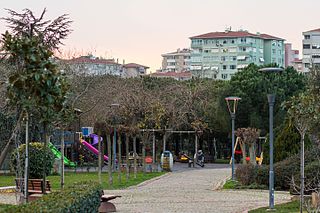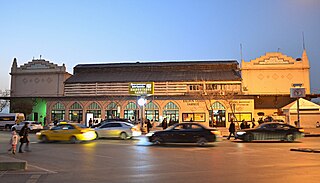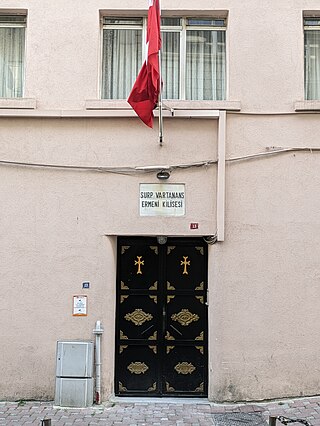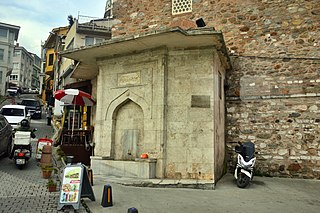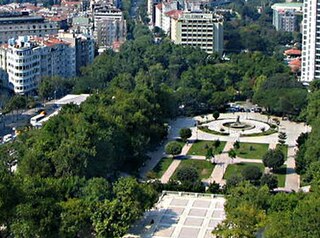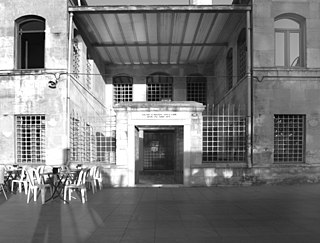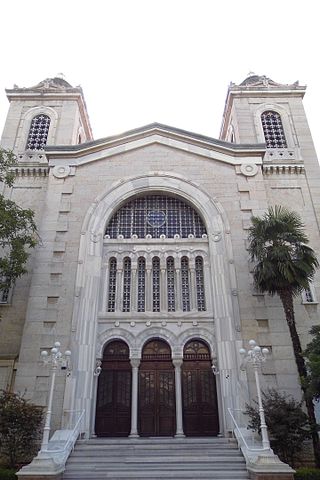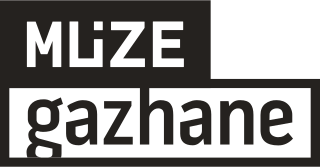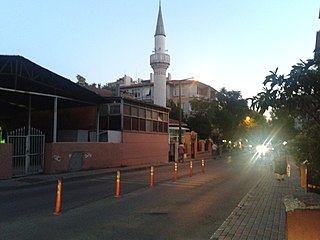34 Sights in İstanbul, Turkey (with Map and Images)
Legend
Premium Sights
Book tickets, guided tours and activities in İstanbul.
Guided Free Walking Tours
Book free guided walking tours in İstanbul.
Welcome to your journey through the most beautiful sights in İstanbul, Turkey! Whether you want to discover the city's historical treasures or experience its modern highlights, you'll find everything your heart desires here. Be inspired by our selection and plan your unforgettable adventure in İstanbul. Dive into the diversity of this fascinating city and discover everything it has to offer.
Sightseeing Tours in İstanbulActivities in İstanbulThe Kadıköy bull statue is a statue of a bull installed in Kadıköy, Istanbul, Turkey. The bull has become a mascot for the neighborhood. It was ordered by Abdülaziz in 1864 and created by French artist Rouillard in Paris. The statue has been in its current location on Altıyol Square since 1987.

Çırağan Palace, a former Ottoman palace, is now a five-star hotel in the Kempinski Hotels chain. It is located on the European shore of the Bosporus, between Beşiktaş and Ortaköy in Istanbul, Turkey.
Ihlamur Palace, is a former imperial Ottoman summer pavilion located in Istanbul, Turkey. It was constructed during the reign of Sultan Abdülmecid I (1839-1860). It is under the administration of the Turkish Directorate of National Palaces.
4. Galata Dervish House Museum
Galata Mevlevi Lodge, also known as Kulekapı Mevlevi Lodge, is a former Mevlevi lodge located in the Beyoğlu district of Istanbul, Turkey. Today, it operates as a museum under the name of Galata Mevlevi Lodge Museum.
5. Arnavutköy
Arnavutköy is a neighbourhood in the municipality and district of Beşiktaş, Istanbul Province, Turkey. Its population is 3,574 (2022). It is renowned for its wooden Ottoman mansions and seafood restaurants, as well as for the campus of the prestigious Robert College with its historic buildings. It is part of the Beşiktaş district of Istanbul, and is located between Ortaköy and Bebek on the European shoreline of the Bosphorus strait.
6. Vialand İsfanbul Tema Park
Vialand, formerly known as Isfanbul, is the first theme park built in Turkey. Located at the intersection of Eyüpsultan and Gaziosmanpaşa districts of Istanbul, the park was officially opened on May 26, 2013 by the prime minister of the time, Recep Tayyip Erdoğan. In addition to the theme park, Vialand also includes a shopping center and a hotel.
7. Süreyya Opera
Süreyya Opera House, also called Süreyya Cultural Center, is an opera hall located at Gen. Asım Gündüz Avenue No: 29, in the Bahariye quarter of the Kadıköy district in Istanbul, Turkey. The building was designed by Ottoman Armenian architect Kegham Kavafyan by the order of a Deputy for Istanbul, Süreyya İlmen. It was originally established in 1927 as the first musical theatre on the Anatolian part of Istanbul. However, due to the lack of appropriate facilities and equipment at the theatre, operettas weren't staged until 2007. The venue was rather used as a movie theatre until the building underwent a functional restoration and reopened as an opera house on December 14, 2007.
8. Miniatürk
Miniatürk is a miniature park at the northeastern shore of Golden Horn in Istanbul, Turkey. It opened May 2, 2003. It is one of the world's largest miniature parks, with a 15,000 m2 (160,000 sq ft) model area and total area of 60,000 square metres (650,000 sq ft). It contains 135 models, in 1:25 scale, of structures from in and around Turkey, and interpretations of historic structures.
9. Fikret Mualla
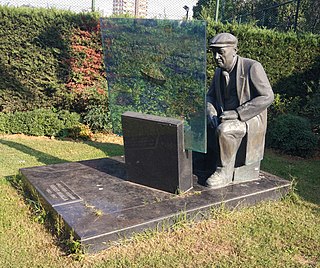
Fikret Muallâ Saygı was a 20th-century avant-garde painter of Turkish descent. His work reflects influences from Expressionism and Fauvism, with subject matter focusing on Paris street life, social gatherings such as cafés and circuses.
10. Topkapı Şehir Parkı
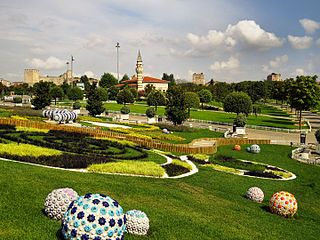
Topkapi Park, Topkapi City Park or Topkapi Culture Park; It is a new generation architectural park built in Topkapı, Istanbul. Its construction started in 1999, it has become its final form by spent various stages and opened in 2009.
11. Sadberk Hanım Museum
The Sadberk Hanım Museum is a private museum on the shores of the Bosphorus in the Büyükdere neighbourhood of Sarıyer district in Istanbul, Turkey. It was established by the Vehbi Koç Foundation in memory of Vehbi Koç’s deceased wife Sadberk. The museum is open every day except Wednesdays.
12. The Museum of Innocence
The Museum of Innocence is a museum in a 19th-century house in Istanbul (Çukurcuma) created by novelist Orhan Pamuk as a companion to his novel The Museum of Innocence. The museum and the novel were created in tandem, centred on the stories of two Istanbul families. On 17 May 2014, the museum was announced as the winner of the 2014 European Museum of the Year Award.
Wikipedia: The Museum of Innocence (museum) (EN), Website, Website Tr, Website En
13. Atatürk Museum, Şişli
Atatürk Museum is a historic house museum dedicated to the life of Mustafa Kemal Atatürk, the first president of the Republic of Turkey. It is located in the district of Şişli, on the European side of Istanbul, Turkey.
14. Süreyya İlmen Heykeli
Ferik Süreyya Pasha İlmen is a Turkish soldier, politician and businessman. After graduating from the Military Academy, he worked for a long time in the General Staff as a staff officer. He became a general at a young age. After the proclamation of the Second Constitutional Monarchy, he made publications on military service. He contributed to the inclusion of aviation in the army. While he was the commander of the division, he left the military service and established and operated a weaving factory, cinema and opera house in Istanbul. He carried out various sports and charitable projects. In 1927, he was elected as a member of parliament from Istanbul. He ended his active political life in 1930. He established SSK Süreyyapaşa Hospital in Maltepe, Istanbul. He died on February 6, 1955.
15. Malta Kiosk
The Malta Kiosk, also known as the Malta Pavilion, is a historic imperial Ottoman residence located within the garden of the Yıldız Palace in Istanbul, Turkey. The two-storey pavilion was commissioned by Sultan Abdülaziz as a hunting lodge, designed by the architect Sarkis Balyan in the neo-baroque style and completed in 1870.
16. Moda Sahnesi
Moda Stage is a venue that was put into service in October 2013 as a result of the transformation of the hall known as "Moda Cinema" in the Moda district of Istanbul into a cultural center and is a theater group that stages plays here.
17. Osman Ağa Mosque
Osmanağa Mosque or Osman Ağa Mosque was replaced by 1. It was built in 1612 by Sultan Ahmet's Babussaade Agha Osman Ağa. When this mosque was destroyed over time, in 1811 2. It was renovated by Sultan Mahmut, but as a result of the fire that occurred in Kadıköy in 1878, it was also burned down, and today's mosque was built in the same year. The plane tree in the garden of the mosque was planted in 1880 by the imam of the mosque, Mehmet Asım Efendi.
18. Hemdat Israel Sinagogu
The Hemdat Israel Synagogue is a Jewish congregation and synagogue, located on Izzettin Street, in the Yeldeğirmeni neighbourhood of the Jewish quarter of Haydarpaşa in Kadıköy, on the Asian side of Istanbul, in the Istanbul Province of Turkey.
19. Küçük Mecidiye Camii
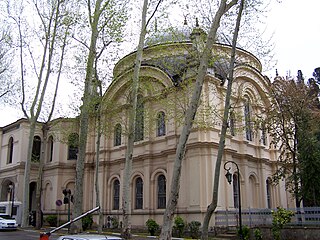
The Küçük Mecidiye Mosque is an Ottoman mosque in the Beşiktaş district of Istanbul, Turkey. It was built from the order of Sultan Abdülmecid I by Nigoğos Balyan, member of the Balyan family. The mosque is located on the Çırağan Street near the entrance to the Yıldız Park. Beşiktaş Police Station is located nearby, Çırağan Palace is across the street.
20. The Feeler
The Feeler is an outdoor sculpture, located on the Üsküdar University campus in Üsküdar, Istanbul, Turkey. Installed in front of the Altunizade Central Campus, it was commissioned in 2011. Small sized versions of the sculpture are given by the University, as awards.
21. Tevfikiye Cami
Tevfikiye Mosque is a historical mosque from the Ottoman Period, located on the coastal road of the Arnavutköy district of the Beşiktaş district of Istanbul. It is also known as "Arnavutköy Mosque" and "Akım Burnu Mosque". Its ownership belongs to the Foundations Administration.
22. Ahmet Kemali Efendi Çeşmesi
Ahmet Kemali Efendi Fountain is a fountain built in 1812 in Sarıyer, Istanbul by Ahmet Kemali Efendi, who was the Chief Imam of Rumeli Kazaskeri, the Sultan and also a composer, and is also known as the Marble Fountain.
23. Church of the Holy Cross
Surp Hac Church is an Armenian church located in the Üsküdar district of Istanbul Province, Turkey. The first church in the district was built in 1689, and the church was rebuilt in 1727 by the order of the Armenian Patriarch Hovhannes IX Golod, and was repaired in 1779, 1781, 1782, 1785, 1790, 1808. In the construction of the church, which was built in masonry on a larger area during the reign of Garabed III of Balat, the architect Krikor Amira Balyan, Kazaz Harutiun Amira Bezciyan, Harutiun Amira Noradungyan, Mikayel Amira Pishmişyan supported the church. The church was renovated in 1892 and was last repaired in 1998.
24. Bebek Parkı
Bebek Park is a public park located in the Bebek neighborhood of Besiktas, Istanbul. Following the renovation by the Sabanci Foundation, the name of the park was changed to Türkan Sabanci Bebek Park on October 13, 2008.
25. Selamiçeşme Özgürlük Parkı
Freedom Park is a park located in the Selamiçeşme district of the Kadıköy district of Istanbul, administratively within the boundaries of the Göztepe neighborhood. The park has football and basketball courts, a tennis court, a walking promenade, playgrounds for children, sports equipment for adults, a bicycle path, ornamental pools, an amphitheater, special areas for walking animals, a picnic area and a cafeteria. The park hosts numerous festivals.
26. Church of the Assumption
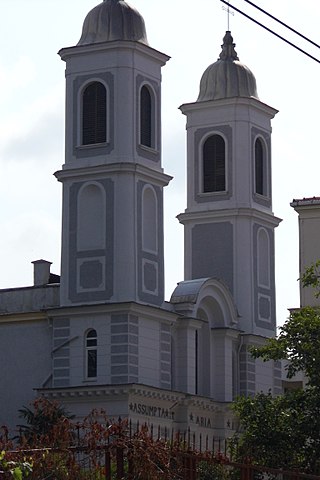
The Church of the French Church of Kadıköy or Notre-Dame de L'Assomption is a Neoclassical Catholic church located in the Kadıköy district of Istanbul, Turkey. The architect of the building, which was completed in 1865, is Giovanni Battista Barborini. The language of worship in the church is French and Turkish.
27. Haldun Taner Stage
Kadıköy Haldun Taner Stage is a theatre venue located in Kadıköy district of Istanbul, Turkey. It is owned by Istanbul Metropolitan Municipality and operated by its City Theatres division. The theatre is named in honor of the Turkish playwright Haldun Taner (1915-1986).
28. Surp Vartanans
Surp Vartanants Church is an Armenian church located in the Feriköy district of the Şişli district of Istanbul Province, Turkey. The construction of the church, which started in 1859, was completed in 1861 and opened for worship. The church was repaired in 1903, rebuilt in 1929 as masonry, and opened in 1931 by Armenian Patriarch Mesrob I. Naroyan. The church was repaired in 2006 and 2011.
29. Rakım Paşa Çeşmesi
Rakım Pasha Fountain is an Ottoman-era fountain located adjacent to the qibla wall of Ali Pertek Mosque on the coastal road in the Rumelihisarı neighborhood of Sarıyer district of Istanbul province. It is also known as the Ibrahim Efendi Fountain. Rakım Mehmed Pasha, who served as the Ottoman treasurer, Governor of Abyssinia and Egypt, had it built for the soul of his father, Defterdar İbrahim Efendi. It is made of cut mold stone. The water is flowing. During the renovation, it was covered with concrete, and its boat was replaced.
30. Taksim Gezi Parkı
Gezi Park is an urban park next to Taksim Square, in Istanbul's Beyoğlu district. It is one of the last green spaces in Beyoğlu and one of the smallest parks of Istanbul. In May 2013, plans to replace the park with a reconstruction of the former Taksim Military Barracks, intended to house a shopping mall, sparked the nationwide 2013 protests in Turkey.
31. Sultan Mustafa İskele Mosque
The temple, also called the Iskele Mosque, was built by Mustafa III in 1760. Years later, it was ruined, and in 1858, Abdülmecid had it rebuilt as masonry. Although it is known that there is a Sıbyan school next to it, it no longer exists.
32. Hagia Triada Greek Orthodox Church
Hagia Triada is a Greek Orthodox church in Istanbul, Turkey. The building was erected in 1880 and is considered the largest Greek Orthodox shrine in Istanbul today. It is still in use by the Greek community of Istanbul. It has about 150 parishioners. The church is located in the district of Beyoğlu, in the neighborhood of Katip Çelebi, on Meşelik sokak, near Taksim Square.
Wikipedia: Hagia Triada Greek Orthodox Church, Istanbul (EN)
33. Müze Gazhane
Hasanpaşa Gazhanesi (also known as Froglıdere Gazhanesi or Kadıköy Gazhanesi) is a building built in Kadıköy in 1892 to supply gas to the Anatolian side of Istanbul, and is now used as a cultural center.
34. Tuğlacıbaşı Camii
Tughlaqcibasi Mosque is a mosque in the Kadıköy district of Istanbul, Turkey. The mosque, which is located in the upper Feneryolu and has masonry walls and wooden roofs, was built in 1860 by Hacı Mustafa Efendi, who has brick blends in Kâğıthane. Its architect is Vasıf Efendi.
Share
How likely are you to recommend us?
Disclaimer Please be aware of your surroundings and do not enter private property. We are not liable for any damages that occur during the tours.
